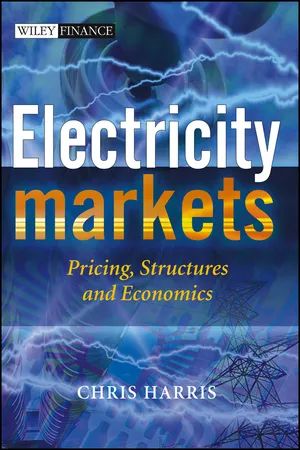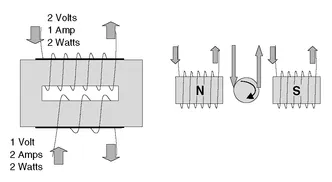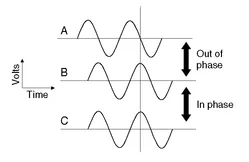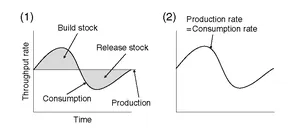
- English
- ePUB (mobile friendly)
- Available on iOS & Android
eBook - ePub
About this book
Understand the electricity market, its policies and how they drive prices, emissions, and security, with this comprehensive cross-disciplinary book. Author Chris Harris includes technical and quantitative arguments so you can confidently construct pricing models based on the various fluctuations that occur. Whether you?re a trader or an analyst, this book will enable you to make informed decisions about this volatile industry.
Frequently asked questions
Yes, you can cancel anytime from the Subscription tab in your account settings on the Perlego website. Your subscription will stay active until the end of your current billing period. Learn how to cancel your subscription.
At the moment all of our mobile-responsive ePub books are available to download via the app. Most of our PDFs are also available to download and we're working on making the final remaining ones downloadable now. Learn more here.
Perlego offers two plans: Essential and Complete
- Essential is ideal for learners and professionals who enjoy exploring a wide range of subjects. Access the Essential Library with 800,000+ trusted titles and best-sellers across business, personal growth, and the humanities. Includes unlimited reading time and Standard Read Aloud voice.
- Complete: Perfect for advanced learners and researchers needing full, unrestricted access. Unlock 1.4M+ books across hundreds of subjects, including academic and specialized titles. The Complete Plan also includes advanced features like Premium Read Aloud and Research Assistant.
We are an online textbook subscription service, where you can get access to an entire online library for less than the price of a single book per month. With over 1 million books across 1000+ topics, we’ve got you covered! Learn more here.
Look out for the read-aloud symbol on your next book to see if you can listen to it. The read-aloud tool reads text aloud for you, highlighting the text as it is being read. You can pause it, speed it up and slow it down. Learn more here.
Yes! You can use the Perlego app on both iOS or Android devices to read anytime, anywhere — even offline. Perfect for commutes or when you’re on the go.
Please note we cannot support devices running on iOS 13 and Android 7 or earlier. Learn more about using the app.
Please note we cannot support devices running on iOS 13 and Android 7 or earlier. Learn more about using the app.
Yes, you can access Electricity Markets by Chris Harris in PDF and/or ePUB format, as well as other popular books in Business & Finance. We have over one million books available in our catalogue for you to explore.
Information
1
The Basics
1.1 HOW ELECTRICITY WORKS
To understand how electricity can behave as a commodity, we must understand its physical characteristics. We must offer a caution at this point; this is not an engineering text and a full description of alternating current is beyond the scope in hand. The purpose here is to understand electricity sufficiently to understand electricity markets, and to do so we resort to ‘folk’ definitions, and simplified analogies. Such methods can only go so far without excessive inaccuracy, and hence some aspects of locational market models in particular cannot be covered without a proper engineering description of alternating current (AC). The reader is referred to engineering texts for these. To quote Stoft,11 ‘Most of the basic properties of AC power flows that are needed to design markets can be understood in terms of this essentially DC model, but some important phenomenon are purely AC in nature’.
Electric current involves the movement of an electromagnetic field that is visualised as the collective movement of electrons through an electric conductor, driven by differential concentrations of electrons that repel each other.
Direct current (DC) is driven by voltage differentials between two points on a wire, as we see in Figure 1.1. So if voltage is applied to a line at the point on the left, it will ‘push’ current to the right. If the current flowing down the line is direct then there will be a consistent voltage differential between the two points.
This movement can then create heat, as the electrons give up their energy by repeated collision with the electrons in the atoms in the conductor, or movement through the electromagnetic action described below.
The current I is related to the voltage V and the electrical resistance R of the wire by Ohm’s law, V = IR. The power P (rate of delivery of energy, in this case from a resistor in the form of heat) imparted is the multiple of the voltage applied and the current flowing. So, P = IV.
Figure 1.1 The relationship between current, voltage and resistance by Ohm’s law

Equipment such as kettles and conventional electric light bulbs work through the resistance of the conductor creating heat, and they are termed resistive load.
Fleming’s rule tells us that electric current can be produced by the movement of a conductor in the presence of a magnetic field, or the movement of a magnetic field across a conductor. The passage of electric current itself creates a magnetic field, and changes in electric current cause changes in the magnetic field. Magnetic fields can be visualised as field lines which are crossed by a conductor. Fleming’s rule also works in reverse, so the movement of a magnetic field across a static conductor, or the movement of a conductor across a static field, also causes the conductor to move.
Changes in electric field across the current in the coils of a motor containing a magnet causes the motor to move. The movement of the motor then pushes current in the opposite direction and ‘impedes’ it. If the power source stopped instantaneously, then the motor would gradually slow as the current created by the motor is converted to heat due to the resistance of the wires. If there is no electrical or mechanical resistance or any inductance anywhere in the circuit, then the motor will turn in perpetual motion as it receives kinetic energy from the current it creates, at the same pace as the kinetic energy creates electrical energy.
A transformer works by the changing currents in the input coil creating a magnetic field in the iron core, which then creates currents in the output coil. Note that it is the change in the current that causes the field. With direct current in the input coil, no current would flow in the output coil. The ratio of numbers of coils determines the current and voltage entering and leaving the transformer.
Figure 1.2 Actions of a transformer and a motor

A voltage that is applied in a cyclic manner by a power generator will cause a cyclic, or alternating, current which has a ‘phase’ that is measured by the timing of the peaks. Figure 1.3 shows alternating current in three circuits. Circuits A and B are out of phase, and circuits B and C are in phase. If the phase differential is constant,12 or at least moving very slowly, then the circuits are said to be synchronous.
Electric motors, that use current through coils to drive the motor are said to have an inductive load. A coil, or solenoid has the same impedance effect. The current passing through the coil sets up a magnetic field which then varies as the current varies and then opposes the voltage. Large diameter conductors (such as in high voltage transmission line that are large to reduce resistance) also have an impedance due to the effect of eddy currents behaving like small solenoids. Fluorescent light bulbs also have an inductive load.
Figure 1.3 The phase of Alternating Current (AC). C can be connected to B, but A cannot

With direct current, applied by a battery of cells, there will be a consistent voltage differential between the two points. For alternating current (AC) whilst the differential changes, the peak voltage can be the same at both points. Whilst at any instant it is the voltage differential that drives the current, it is more convenient to understand it in terms of the phase differential between the points. To draw power, either for resistive or inductive load, it does not matter which way the current is flowing.
Figure 1.4 Pictorial representation of how voltage difference between points can result from a phase difference in alternating current between the points without a differential of peak-to-peak voltage

This visualisation of alternating current is in reality a ‘DC-like’ visualisation that is only correct if the frequency is very low. At high frequencies, the current is not simply related to the voltage differential.
Impedance affects the relative phase, or ‘phase angle’ between the current and the voltage. The result of this in long transmission line is that the phase angle increases, and to stabilise the power, a reactive source is required. Reactive power is described in the appendix. For a purely inductive load, current lags voltage by 90°, and for a purely capacitive load, current leads voltage by 90°.
1.2 EARLY DEVELOPMENT OF THE ELECTRICITY SUPPLY INDUSTRY (ESI)
‘As far as domestic applications are concerned, electricity has wrought a revolution that is so complete that it is virtually taken for granted in most homes in the advanced industrial societies’ — Buchanan in ‘the Power of the Machine’.
Electricity providers are commonly grouped in the category of ‘utilities’, along with providers of services such as clean water, waste water removal, gas and telecommunication. While electricity provision is commonly regarded as a basic utility that is noticeable in the most developed economies only when it fails, in developing countries electricity provision remains a core aspiration and development indicator.
The electricity industry is a young one, post dating the industrial revolution. Whilst electricity was known by the ancient Greeks in the form of static electricity, it was not until the ‘second electrical revolution’13 of the 1880’s that power for lighting and motors was used to any degree, while still over a quarter of the world’s population does not have access to electricity.
Figure 1.5 Development of electricity discovery and usage14

The early days of the Electricity Supply Industry (ESI) were driven by discovery and private enterprise. Whilst experimental usage grew during the 19th century, for example the lighting of an opera in Paris in 184415 with arc lights, it was the growth of public incandescent lighting using power stations as a source that marks the beginning of the ESI. Development during the first 15 years was rapid as we can see from the chronology16 below.
1878 Creation of incandescent light bulb by Swan in the UK17
1878 Street (arc) lighting in Paris18
1879 Creation of long lasting incandescent light bulb by Edison and Jehl in the USA19
1881 Opening of Godalming power station in the UK20
1882 Opening of Pearl Street power station in the USA21
1882 First transmission lines in Germany (2400v DC, 59 km)22
1883 Holborn viaduct power station in the UK
1885 Commercially practical transformer (William Stanley)
1885 Hydro power station and 56km transmission in France
1885 Public electricity supply in Norway23
1887 Interior lighting in Lloyds Bank, London UK
1887 — 9 High voltage alternating current transmission in Deptford, UK
1887 Public electricity supply in Japan24
1889 Single phase alternating current transmission (4 kV, 21 km) Portland Oregon, USA
1893 Three phase AC transmission (12 kV, 179 km) Germany
1894 generators used to supply motor pumps in mines in Malaysia25
1895 Public electricity supply in Australia
1878 Street (arc) lighting in Paris18
1879 Creation of long lasting incandescent light bulb by Edison and Jehl in the USA19
1881 Opening of Godalming power station in the UK20
1882 Opening of Pearl Street power station in the USA21
1882 First transmission lines in Germany (2400v DC, 59 km)22
1883 Holborn viaduct power station in the UK
1885 Commercially practical transformer (William Stanley)
1885 Hydro power station and 56km transmission in France
1885 Public electricity supply in Norway23
1887 Interior lighting in Lloyds Bank, London UK
1887 — 9 High voltage alternating current transmission in Deptford, UK
1887 Public electricity supply in Japan24
1889 Single phase alternating current transmission (4 kV, 21 km) Portland Oregon, USA
1893 Three phase AC transmission (12 kV, 179 km) Germany
1894 generators used to supply motor pumps in mines in Malaysia25
1895 Public electricity supply in Australia
In Great Britain, for example, by 1909 there were already laws denying new entry without licence and by 1914 there were 70 power stations in London.
Soon after this burst of development were attempts to standardise. For example, the first attempt to standardise frequency to 60 Hz in the USA was in 1891, although Southern California Edison did not convert from 50 Hz to 60 Hz until 1949.
1.3 THE LIFECYCLE OF ELECTRIC POWER
Central to almost all aspects of electricity is the issue of storage. Whilst most commodities can absorb production and demand variations by delivering to stock and withdrawing from stock, this cannot be done for electricity. While we shall see that there are various methods that amount to storage, for the moment we can assume that electricity must be consumed as it is produced.
Figure 1.6 (1) The use of storage to maintain even production through a consumption cycle for storable commodities, (2) The necessity to consume electricity as it is produced, and vice versa

The essential stages in the lifecycle in electric power are:
(i) energy sourcing;
(ii) power generation;
(iii) network transportation, divided into high and low voltage;
(iv) supply management;
(v) consumption.
There are in addition three essential activities that can be considered as part of the supply chain, since every megawatt (MW) of electricity that passes through the network passes through them. They are:
(vi) system operation;
(vii) market operation;
(viii) metering.
And finally, something which cannot be ignored, which is:
(ix) disposal and environmental impact.
Energy Sourcing — Starting with the energy source, a natural asset under (initially) com...
Table of contents
- Title Page
- Copyright Page
- Dedication
- Preface
- Acknowledgements
- Introduction
- Chapter 1 - The Basics
- Chapter 2 - Structure, Operation and Management of the Electricity Supply Chain
- Chapter 3 - Policy — Issues, Priorities, Stakeholders, Influencers
- Chapter 4 - Liberalisation, Deregulation and Regulation
- Chapter 5 - Market Structures for Electricity
- Chapter 6 - Power Capacity
- Chapter 7 - Location
- Chapter 8 - Environment, Amenity, Corporate Responsibility
- Chapter 9 - Price and Derivatives Modelling
- Chapter 10 - Economic Principles in Relation to the ESI
- Chapter 11 - Financial Modelling of Power Plant
- Chapter 12 - Security of Supply
- Appendix
- References
- Index